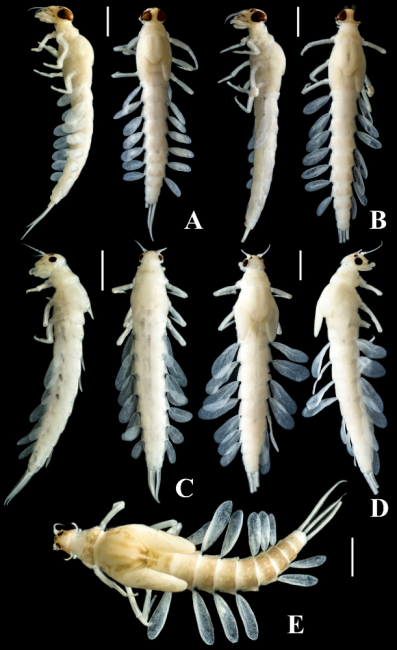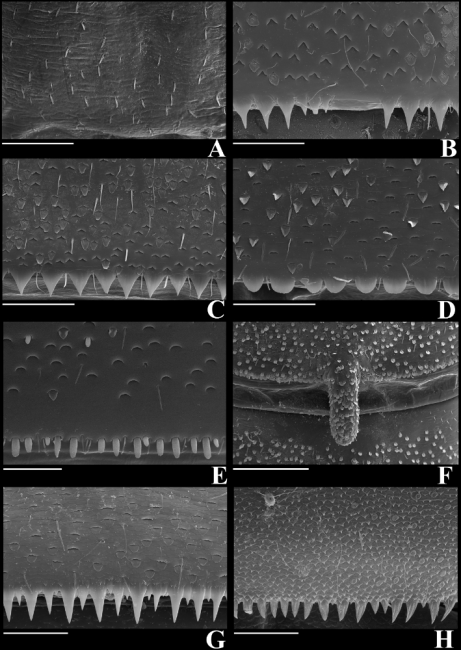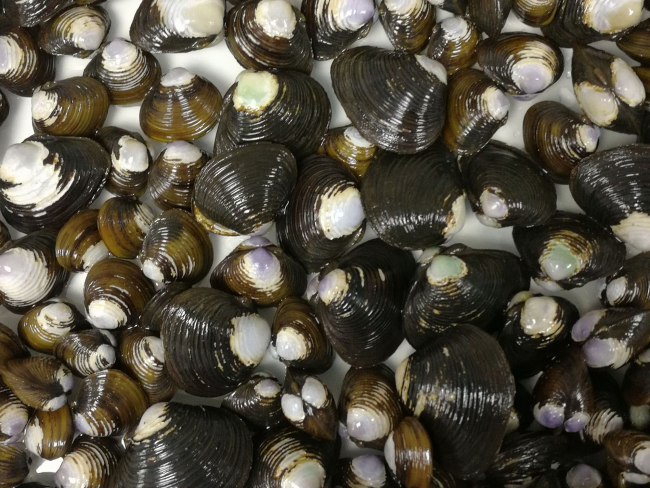The Asian mollusk Corbicula fluminea is one of the most successful invaders in freshwater ecosystems. They settled far beyond the borders of East and Southeast Asia - their native range - and spread in the waters of North, Central and South America and in Europe. At the same time, scientists noticed a pattern: if in the European zone of invasions, corbiculae are free from any “cohabitants”, while in the native area the shell cavity often becomes an incubator for insect larvae, as well as water mites and parasitic trematode worms.

The role of a refuge for insects is unlikely to have any effect on the fertility of these unpretentious hermaphrodite corbiculae. At least, this is demonstrated by the example of two new endemic species of mayflies, previously unknown to science, recently discovered by Russian scientists in Laos and Thailand. The larvae of winged insects were found in corbicula living in the Mun and Sein Kapo rivers. The new species were named Symbiocloeon corbiculinus and Symbiocloeon laoensis. This is the first case of discovery of mayflies in corbiculae recorded by science.
"Studio apartment tenants"
Dmitry Palatov, Senior Researcher at the Synecology Laboratory of the A.N. Severtsov Institute of Ecology and Evolution, Russian Academy of Sciences (Moscow), says that the first representatives of the genus Symbiocloeon were discovered in 1979, and only two of their species have been known to date. Both developed inside the shells of very large mollusks, the corbicula being much smaller. Previously scientists did not consider the possibility of symbiotic fauna within corbicula: it is unlikely that someone larger than nematodes lives in compact shells. Therefore, the fact of such a find is already surprising in itself.

Director of the N.P. Laverov Institute of Biogeography and Genetic Resources of the Federal Research Center for the Comprehensive Study of the Arctic of the Ural Branch of the Russian Academy of Sciences (FITsKIA Ural Branch of RAS, Arkhangelsk) Yulia Bespalaya notes a trend: in the overwhelming majority of cases of discovered symbiotic relationships, there is only one insect larva per mollusk individual. A kind of evolutionarily adjusted load, which gives the mayflies, rather, the status of a commensal cohabitant (whose owner receives neither harm nor benefit), rather than a harmful parasite. In the language of housing and communal services, a tolerable tenant of a studio apartment.
– Mayfly larvae attach themselves to the area of corbicula gills, which is obviously due to the fact that oxygen saturation and nutrition in this part of the mollusk body is the highest, – says Yulia Bespalaya. – At the same time, the gills of mayflies are enlarged compared to free- living species. Gill filaments grow somewhat - mayflies receive more oxygen.
According to Dmitry Palatov, the chitinization of the gills is weakened in the larvae - they are very soft and wide. The oral appendages are strongly modified - softened and expanded. It seems that with such a configuration it is easier to feed on fragments of organic matter from the gills. Their limbs are noticeably weakened - definitely not fit for swimming effectively. They are barely able to glide over the body of the mollusk.
Deprived of "combat equipment"
In the larvae of mayflies found in Laos and Thailand, the external structure is modified for the comfort of the host. The development of molluscs on soft structures under the protection of a strong thick-walled shell influenced their appearance: they lost (some partially and some completely) almost all the rigid elements of their external structure - strong bristles, spines and microscales.

– The body of a common mayfly larva is completely covered with such microstructures. The species described by us got rid of such attributes almost completely - there is a minimum of surface chitinous structures, - emphasizes Dmitry Palatov. “They look like little soft pouches on the gills of a clam.
– New species of mayflies do not have the same “combat equipment” as free-living species, since they reside in the cavity of mollusks, which can be injured and harm the host, – believes Alexander Kropotin, junior researcher at the Museum of Biodiversity Centers of the Ural Branch of the Russian Academy of Sciences.
Scientists are convinced that in different regions of Southeast and East Asia - Myanmar, Vietnam, Cambodia, China and North Korea - there are many species of symbiocleons still unknown to science. There is a lot of work to be done in this direction. Especially when you consider that it is still unknown what adult winged individuals look like, how they leave the mollusk and where they lay their eggs. The family ties of symbiocleons are also a mystery. From which group of free-living mayflies they originated, scientists cannot yet say with confidence.
The article about the symbiotic relationship between mayflies and corbiculae was published in the Biological Journal of the Linnean Society.
You can download the article in pdf format here.
Related materials:
Scientific Russia: "Shells with a surprise: zoologists of the Laverov Center and IEE RAS
study the symbiotic relationships of freshwater species of Asian fauna"
